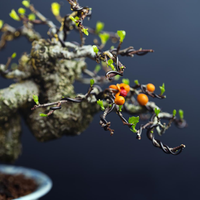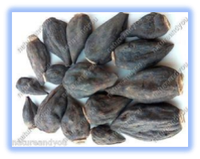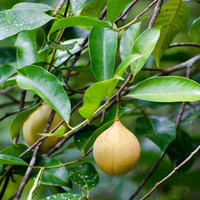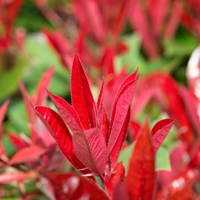Syzygium Aromaticum (Cloves)
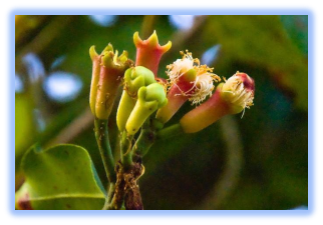
Family: Myrtaceae
Habitat: Cultivated in many parts of the world and also to a considerable extent in South India: flower buds collected twice a year, In the months of October and February when they change colour from green to crimson, dried carefully and separated from their peduncles. They are largely grown in humid climates across the globe.
Description: People often know cloves as a form of spicing and seasoning for food, but they are also widely used as a healing compound. Cloves contain - among other compounds – gallotannins, triterpenes (natural compounds that are seen to be antidiabetic), flavonoids and phenolic acids. Phenolic acids are found in a variety of plant-based foods; the seeds and skins of fruits and the leaves of vegetables contain the highest concentrations. They work as antioxidants that prevent cellular damage and also promote anti-inflammatory conditions.
- Oil derived from Cloves contains additional compounds including:
- b-caryophyllene eugenol: Used mainly in flavouring and adulterate bud oil.
- Eugenol acetate: Natural antioxidant.
Cloves can be used in whole form, ground form or reduced to its essential oil. Cloves have been noted to help with digestion due to relaxing the inner linings of the intestines, and acts as an expectorant to make coughs less severe. It can also act as an antimicrobial agent and as antihistamines. When applied topically, cloves can be seen to relieve pain from rheumatism, arthritis and other inflammation-based pain.
Macroscopic
Flower bud measuring 10-17.5 mm in length, dark brown or dusty red, consisting of a sub- cylindrical, slightly flattened, four sided hypanthium, readily exuding oil when pressed.
Hypanthium containing in its upper portion a two celled inferior ovary with numerous ovules attached to a axile placenta, surmounted by four thick, divergent sepals and covered by unopened corolla consisting of four membranous imbricate petals, frequently detached, enclosing numerous incurved stamens and one erect-style, odour, strongly aromatic, taste, pungent, followed by slight tingling of the tongue.
Microscopic
Transverse section of hypanthium shows epidermis and calyx teeth composed of straight walled cells. With thick cuticle having large anomocytic stomata, hypanthium tissue spongy, clusters of calcium oxalate crystals varying in size from 6-20 µ in diameter. Small number of stone cells and prismatic crystals of calcium oxalate present in stalk, stamens, each with an oil gland in the apex of the connective, triangularly centricular pollen grains, 15-20 µ in diameter anther walls showing a typical fibrous layer, schizolysigenous glands found in all parts of clove, occasional isolate pericyclic fibres present.
On this page

